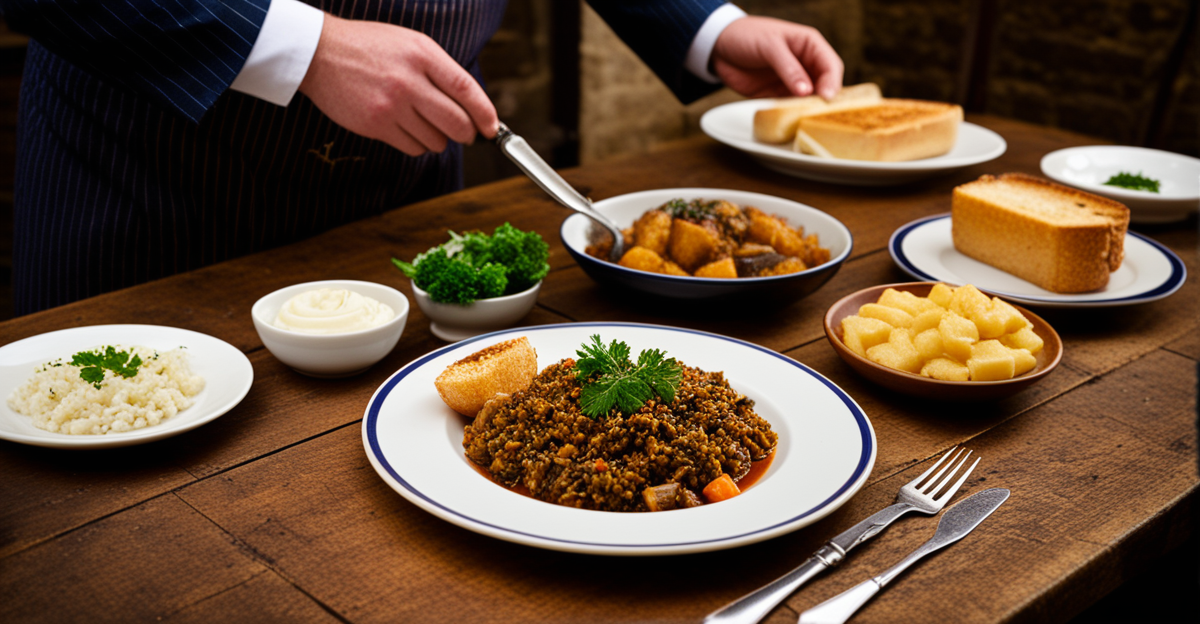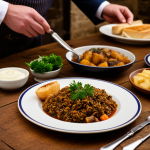Essential Historical Influences on Traditional British Cuisine
British cooking traditions have deep roots, shaped extensively by the Roman, Saxon, and Norman conquests. These invasions introduced foundational British cooking methods such as roasting and baking techniques, which became staples in preparing traditional British dishes like roast beef and pies. The Roman impact is evident in the use of herbs and structured cooking styles, while the Saxons brought early farming techniques, influencing the use of local roots and grains.
Over centuries, British cuisine evolved through trade and empire, integrating exotic spices and ingredients that enriched traditional recipes. For example, wartime scarcity led to inventive substitutions in iconic dishes, preserving flavour despite limited resources. This adaptability demonstrates how British cooking traditions have always been dynamic, reflecting broader historical and economic shifts.
This might interest you : How can you create a perfect fish and chips at home?
Regional ingredients further shaped culinary history in the UK. Coastal areas contributed fresh seafood, while rural regions emphasized game and root vegetables. This regional integration became a hallmark of traditional British dishes, combining local flavours with inherited cooking techniques. Understanding this historical tapestry offers valuable insight into the enduring appeal and diversity of British cooking traditions.
Classic Techniques Behind British Dishes
Mastering British cooking techniques is key to replicating beloved traditional British dishes consistently. The method for roasting, especially in classics like roast beef, involves slow cooking at a low temperature before a high-heat finish. This technique ensures a tender inside with a flavorful crust—essential to the iconic British roast. Precision in temperature and timing directly impacts meat juiciness and texture, showcasing centuries-old culinary wisdom.
Additional reading : What are the tips for making a rich and savory beef Wellington?
Yorkshire pudding, another staple, relies on a distinct batter composition and cooking method. The batter must be prepared with cold water and eggs, then poured into preheated fat. This immediate heat contact causes a dramatic rise and crispy edges, critical for an authentic Yorkshire pudding experience. Many miss this subtlety, resulting in flat, dense puddings.
Frying for dishes like fish and chips demands attention to oil temperature and batter consistency. Maintaining oil between 175°C and 190°C creates the perfect golden, crisp exterior while sealing in moisture. Too low a temperature leads to sogginess; too high burns the batter prematurely.
These techniques, perfected through practice, unlock the rich textural contrasts and flavors that define traditional British dishes. Adopting these methods elevates home cooking to genuine British culinary tradition, preserving its historic essence.
Signature Ingredients and Their Unique Roles
Distinct British ingredients form the backbone of many traditional British dishes, each playing a pivotal role in defining flavour and texture. For example, beef drippings lend a robust, savory depth to roast dishes, enhancing the natural richness of the meat. Suet, rendered from beef or mutton fat, is indispensable for creating flaky, tender pastry in pies and puddings, maintaining moisture while adding subtle richness.
Seasonings like English mustard and horseradish carry historical significance, complementing hearty meats with sharp, pungent heat. These condiments have long been favored for balancing richness and adding a distinct, piquant character that elevates otherwise simple plates.
Regional produce and seafood further diversify the palate of iconic British foods. Coastal regions contribute fresh fish and shellfish, integral to dishes such as fish and chips, while rural farms supply root vegetables and artisanal cheeses tailored to local soil and climate conditions.
This thoughtful selection and integration of secret ingredients highlight the interplay between culinary history and geography, preserving traditional tastes through generations. Understanding these ingredients is essential for anyone aiming to recreate authentic British cooking traditions.
Cultural Traditions Preserved in British Cooking
British food culture thrives on deep-rooted culinary rituals that bring families and communities together. The Sunday roast is a prime example—a weekly tradition where families gather to enjoy roast beef or lamb with seasonal vegetables. This ritual emphasizes not only the flavours but also the importance of shared time, reinforcing social bonds through food.
Seasonality plays a critical role in British food traditions. Ingredients like root vegetables, game, and coastal seafood are celebrated during their peak, reflecting a respect for natural cycles. Seasonal cooking connects modern meals to centuries-old practices, preserving heritage and encouraging sustainability.
Many British food traditions are passed down through family recipes, forming a bridge between generations. These recipes often carry stories, techniques, and subtle ingredient choices that embody the essence of British cooking traditions. Such transmission ensures these culinary legacies endure beyond mere taste, becoming cultural markers within households.
This preservation of British food culture shows how tradition shapes the way dishes are prepared, served, and enjoyed. For anyone interested in authentic traditional British dishes, understanding these rituals enriches the cooking experience and deepens appreciation for the cuisine’s historic value.
Insider Tips for Authentic British Flavours at Home
Achieving authentic traditional British dishes at home hinges on mastering a few essential British cooking tips. First, sourcing key British ingredients like malt vinegar, suet, or English mustard can be challenging outside the UK. When unavailable, quality substitutes such as cider vinegar for malt vinegar or clarified butter for suet help preserve signature flavours without compromise.
Timing and temperature are crucial. For example, precise control of roasting time and heat unlocks the roast beef secrets of tender, juicy meat with a rich crust. Similarly, Yorkshire pudding tips stress using cold water in the batter and pouring it into preheated fat for dramatic rise and crispness—a technique easy to miss but vital for authenticity.
Presentation also matters. Serving components like gravy separately and keeping vegetables vibrant enhances traditional food at home, replicating the experience beyond taste alone.
Finally, patience and practice are key. Experimenting with these British cooking tips ensures your dishes reflect the depth of culinary history within British cooking traditions. By embracing these insider pointers, cooks can confidently bring iconic British flavours into their kitchens, celebrating the legacy of authentic UK recipes with every meal.




